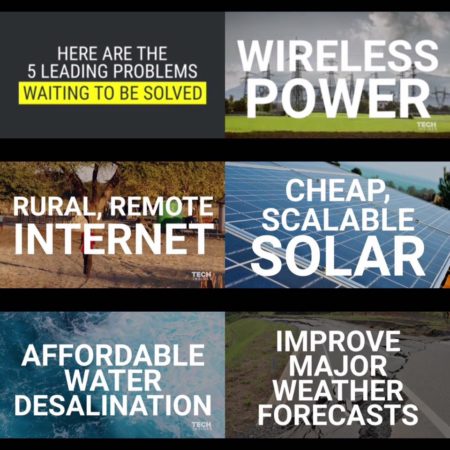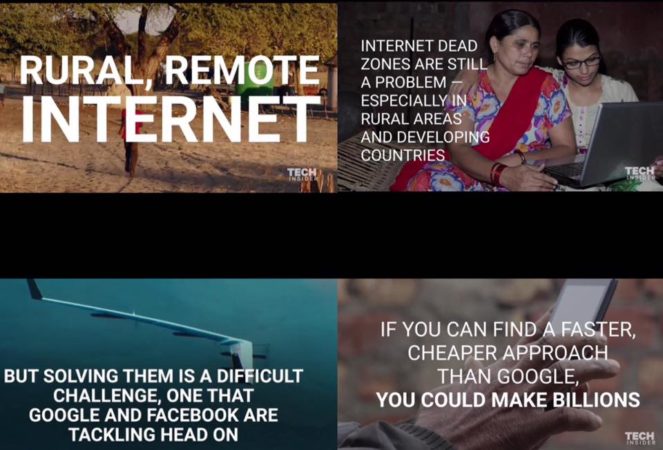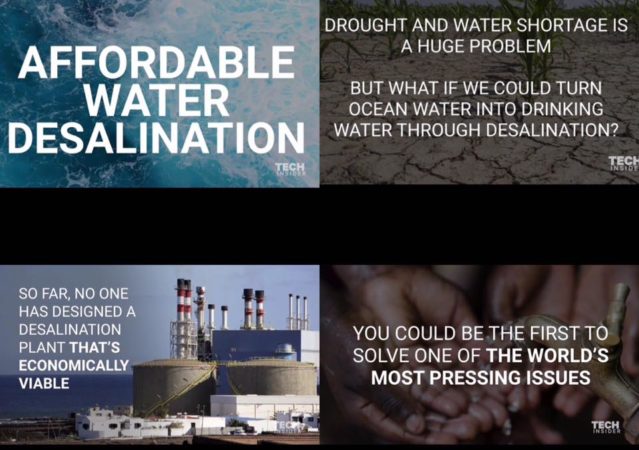 Who Wants To Become A Billionaire? Just Solve One Of These 5 Problems
Who Wants To Become A Billionaire? Just Solve One Of These 5 Problems
- Your idea could be worth billions!
Jan 2, 2018: If you have ever imagined yourself living the sweet life like Mark Zuckerberg or Bill Gates, you can by solving one of these five problems the world has been trying to solve.
NigeriaNews.ca herein presents to you a list of 5 trends that would make people billions. Most of the phenomena will end up benefiting everyone.
The real challenge, and the greater value and more lucrative pursuit, would be to come up with the solutions to problems that have befuddled engineers for decades or more.
We thought of 5 of them:
1. Wireless Electric Power
Digital devices have become so small that it can be cumbersome to plug them into a electric power source. Longer-lasting batteries? Nope — Apple iPod God Tony Fadell says pursuing greater efficiency in batteries is a trap. The key is to find ways of squeezing more efficiency out of the devices’ other parts — and stealing power from what’s around you. University of Washington engineers, among others, are at work on harvesting existing TV and cellular transmissions and turning them into a power source. “This novel technique enables ubiquitous communication where devices can communicate among themselves at unprecedented scales and in locations that were previously inaccessible,” they say.

2. Rural, Remote Internet
Everyone agrees this is a priority. But there appear to be a hard way and an easier way to achieve it. The former involves lots of expensive regulatory clearance and installations. The latter, currently spearheaded by Google, is called Project Loon. The company plans to send renewables-powered balloons to the edge of space to create an Internet network in remote parts of the world. “We believe it’s possible to create a ring of balloons that fly around the globe on the stratospheric winds and provide Internet access to the earth below,” they say. Whoa.

3. Cheap, Scalable Solar
There are two ways to reduce the cost of raw solar power. One is to have a super-cheap photovoltaic cell, with the tradeoff off that it’s inefficient. Of course, more efficient cells cost more to make. So everyone is racing to find a material or process that eliminates the tradeoffs. We may be close: Australian researchers say they’ve achieved commercial-scale efficiency with a set of dirt-cheap materials first experimented with a century ago but never considered for this use: perovskites. The scientists say they could help cut solar costs by 75% to as low as 10 cents a watt.

4. Cheap Water Desalination
Water shortages continue to make the list of the world’s most pressing issues. This year’s crippling drought in California further drove the point home. But desalination plants have proved way too expensive and inefficient to build. But earlier this year, Business Insider’s Dina Spector profiled the company behind a kind of solar-powered desalination process that uses uses half the total energy — most of it coming from solar — of the best competing thermal (fossil) methods, and one-fifth the electricity of reverse osmosis technology. If something like this doesn’t pan out, we’ll have to keep relying on massive conservation efforts — which basically means we’ve already lost.

5. Detecting Or Predicting Major Weather Or Natural Events
A new book about the San Andreas Fault frames the issue like this: “the world community of seismologists remains divided — at times, vehemently — over the issue of whether it will ever be possible to predict earthquakes. It’s a question that’s been raised again as the network of faults in Southern California has awakened with seismic activity in recent months. It is a complex problem. And, to date, no one has yet predicted an earthquake.” Meanwhile the number of billion-dollar meteorological events climbs inexorably higher.

BUSINESSINSIDER